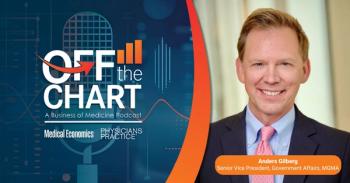
Proposed Stage 2 Meaningful Use Rules Present Challenges for Practices
Though the proposal is months away from being finalized, practices should be ready to do even more with their EHRs.
Are providers at your practice using technology to coordinate care with other physicians? Are they focused on improving specific patient outcomes?
In order to meet Stage 2 of CMS’ “meaningful use” EHR incentive program - and qualify for the full $44,000 Medicare benefit or $65,000 Medicaid benefit - providers will have to do both. And that’s just the beginning of the challenges that await anyone who plans to attest for the second phase of CMS’ program, according to healthcare experts.
Last week CMS released the
Though the proposal is months away from transforming into a final rule, consultants and healthcare industry experts have already highlighted the most important parts of the proposal that providers at practices will need to pay attention to should most of the proposal stay intact, as expected.
First and foremost: If you attested for Stage 1 of the meaningful use program in 2011, you’ll have a little more time to attest for Stage 2. Under the proposed rule, Stage 1 has been extended an additional year, allowing providers to attest to Stage 2 in 2014, instead of in 2013.
“It’s really an extension of Stage 1 for people who already attested only,” healthcare researcher and consultant Erica Drazen, managing director of CSC’s Global Institute for Emerging Healthcare Practices, told Physicians Practice, adding that the new timeline will give practices and vendors more flexibility. If Stage 2 is finalized in summer, practices who attested in 2011 would have had much less time to attest to meet the 2013 deadline.
But regardless of when they begin Stage 2, providers should be prepared to increase their rate of e-prescribing.
One of Stage 2’s “core objectives” calls for providers to “generate and transmit prescriptions electronically for more than 65 percent of prescriptions.”
Robert Tennant, senior policy advisor for the Medical Group Management Association (MGMA), says his organization believes that threshold is a bit high.
“We’ve always felt that the threshold for e-prescribing should be kept fairly low because it’s one of the cases where patients can opt out, and patients do opt out from prescriptions being sent to the pharmacy,” Tennant told Physicians Practice, noting that in order for a prescription to count under the rule, it has to be sent using qualified e-prescribing technology. “A lot of folks still get their prescription through mail order. A lot of times a physician will say ‘only fill it if you need it.’”
Another concern is the core objective calling for providers to “provide patients the ability to view online, download, and transmit their health information within four business days of the information being available to the [eligible professional],” which may challenge practices who can’t afford a patient portal.
“We’re not convinced a patient portal is the way to go for small practices at this point,” said Tennant. “There are additional costs. CMS needs to add some flexibility … it makes sense to add a number of options. A smaller practice that can’t invest in that technology should be able to use some other transmission method to get [personal health information] to patients.”
MGMA healthcare consultant Rosemarie Nelson said a few of the requirements, if they stand in the final rule, will prove challenging.
The first one that caught her eye is the core objective calling for providers to “incorporate clinical lab-test results into Certified EHR Technology as structured data” for more than 55 percent of all clinical lab test results.
However, though practices have interfaces to major blood lab providers such as Quest Diagnostics and LabCorp, not all labs have the ability to interface with all EHRs, she said.
“Fifty-five percent is a lot,” Nelson told Physicians Practice. “Depending upon the patient’s insurance company, you might need to get three or four interfaces to get this measure completed.”
Healthcare technology consultant Bruce Kleaveland said the most important measures are also the most onerous because the industry and practices will have to invest in new technologies and work flows to achieve compliance.
“Specifically the two areas are health information exchange (i.e. movement of information between disparate organizations) and patient engagement requirements (i.e. the ability of patients to view their own record) that will be challenging,” Kleaveland told Physicians Practice via e-mail. “The percentage requirements on these items are fairly modest, but they represent building out an infrastructure and approach that is not yet mature in the industry, but is very important in achieving the long-term goals of the [meaningful use] program.”
Newsletter
Optimize your practice with the Physicians Practice newsletter, offering management pearls, leadership tips, and business strategies tailored for practice administrators and physicians of any specialty.









